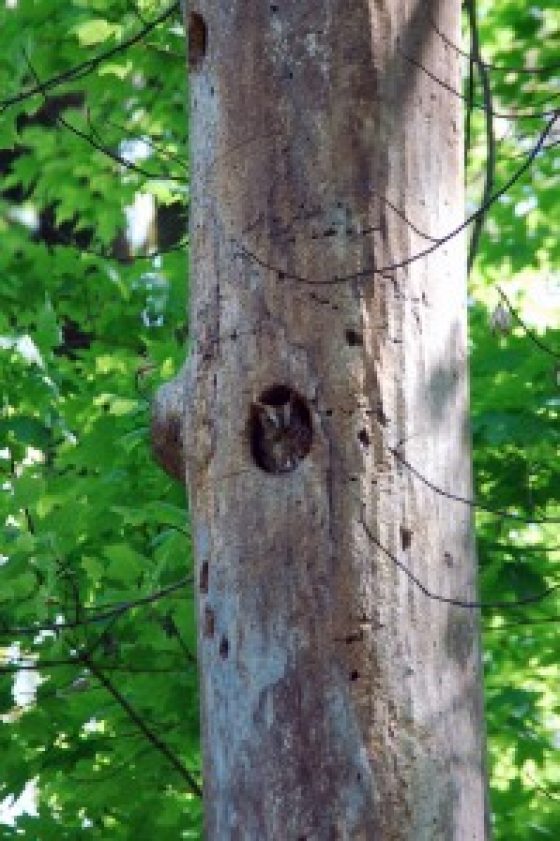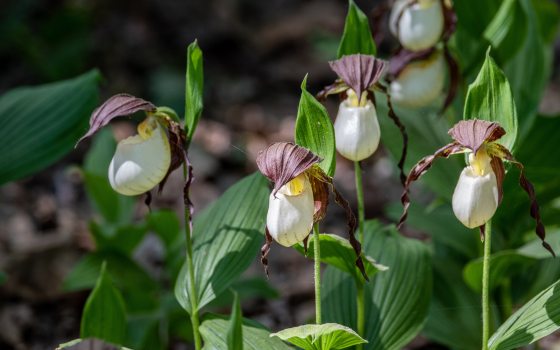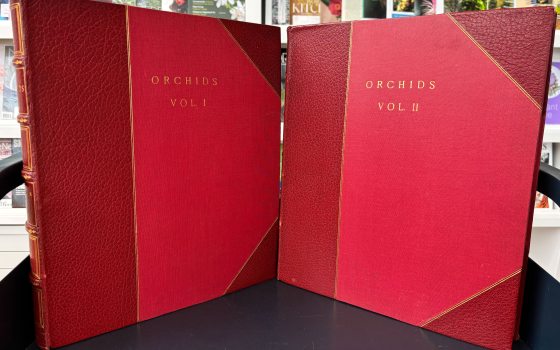

In March of 2009 we posted a video of a Pileated woodpecker building a nest in a large dead tree (snag) in the woods at Longwood. This year, an Eastern Screech Owl (Otus asio)--a small (8 1/2 inches), nocturnal, woodland owl--has taken up residence in the same location, using the hole that the Pileated built (the woodpecker builds its nest in a new location each year). The owl sits in this spot all day, and hunts during the nighttime hours. Mid-April is the screech owls' breeding season, and there may be a female sitting on a nest within the cavity, although we have not seen any activity other than this owl sitting in this spot each day for the past few weeks. The owls may re-use a nesting site in subsequent years. Longwood's newest resident illustrates the importance of retaining dead trees in the woods from year to year to benefit many different species. This cavity might eventually be used by owls, other woodpeckers, squirrels, flying squirrels and other animals.
Visit our website to view the dates of our bird tours, held throughout the year, which are a great opportunity to get acquainted with Longwood's feathered residents and visitors.


